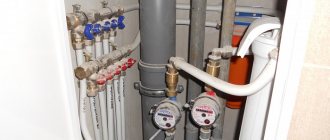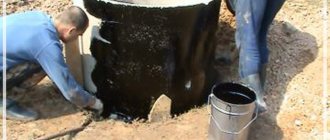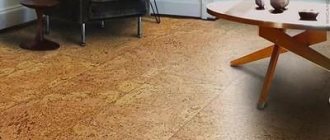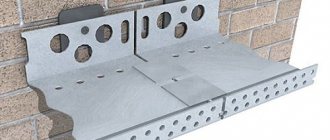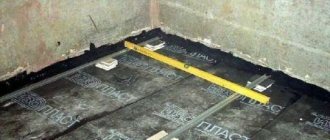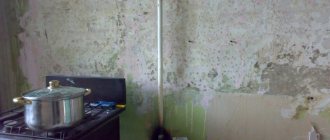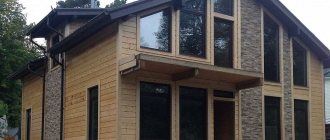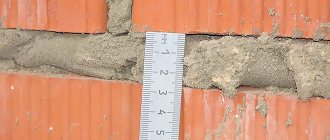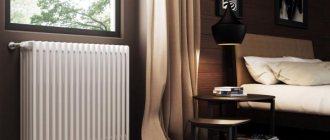Therefore, drastic measures have to be taken to reduce the sound produced by the sewage system.
Noise in sewer pipes occurs for many reasons, these are:
- Insufficient wall thickness of the drain system pipes.
- Material of manufacture.
- Incorrect placement of walls and pipes in the apartment.
- Incorrectly selected seal.
Noises and reasons for their appearance
Sources of sounds in a residential area can be nature, transport, operating equipment, the operation of utilities, and even the steps of neighbors. For humans, sound intensity indicators are important. Sanitary standards are set out in SanPiN 2.1.2.2645 of 2010 (in a living room, 30 dB is allowed at night and 40 dB during the day). Examples of indicators that are typical for everyday life (in dB):
- 0 – lower threshold, which is perceived by the hearing organs;
- up to 30 – natural noise level in nature, human whisper;
- up to 40 – normal sound level for active life, but not for sleep or rest;
- within 60 – an area with busy traffic, active communication within a distance of 1 meter;
- 100 – inside an industrial enterprise, a forge shop, in a concert hall (for example, rock music);
- 130 is the sound level that causes pain.
Measuring the noise level at an enterprise Source wp.com
For the installation of a sewer riser, pipes of a wide diameter are used (today it is 100-110 mm). In such a channel, both liquid and solid waste move freely. This is often accompanied by noise. Upon closer examination, the reasons for soundproofing a sewer riser are:
- Impact load on internal walls. This is observed to a greater extent at the junctions, turns and branches of the highway.
- Collision of different flows. A similar phenomenon occurs in multi-storey and apartment buildings. Here, different waste streams flow simultaneously from different points.
- Installation errors. More often, noise arises from impacts of the channel against ceilings, incorrectly selected fasteners, and elements of the cladding structure. The reason is vibration of the pipes during operation due to unreliable fixation. Otherwise, the phenomenon is called resonant or structural noise.
- Selection of fan pipes. The modern market is filled with ready-made solutions, but cheap products including fasteners are often installed. In particular, they choose plastic with thin walls and plumbing clamps that quickly weaken.
An ordinary thin-walled plastic pipe Source dostavkin.com
It is believed that infrasonic waves are the most harmful to humans.
This phenomenon is unsafe and is not perceived by the auditory organs. It occurs in a building due to the vibration load of fan pipes on floor slabs and walls at contact points and through fasteners.
Why does plastic make noise?
Researchers find several sources of noise in the pipe:
- Impact - when the contents fall in the riser, they hit the walls.
- Atmospheric - simply the noise of the wind in a ventilated riser.
- Resonant – extraneous sounds are heard in the pipe.
- Vibration – vibrations of the building are transmitted to the pipe, etc.
Why is the trumpet so sensitive to sounds? Because it is a pipe, an acoustic resonance system, and, unlike an organ or wind pipe, it is multi-frequency. The length of sewer risers from bottom to top is from several meters to tens of meters; speed of sound in air – 330 m/s. The main resonant frequency of the riser will be from several hertz to tens of hertz, and the overtones will be located on the sound frequency scale at intervals equal to the fundamental frequency. That is, with the slightest periodic impact on the pipe, it will give an almost continuous hum: in the region of best audibility, the untrained human ear can no longer distinguish a frequency difference of 20 Hz.
Resonance phenomena in a pipe cause not only vibration of its walls, but also alternating deformations (bending, tension/compression) of the pipe body, i.e. pipes in general. The sound from the vibration of the walls is transmitted directly to the rooms, and alternating deformations, in addition, affect the structure of the building.
Soundproofing methods
Materials and techniques are used to prevent and eliminate the causes of various types of noise and sound waves. Only old-style cast iron channels do not need this. They themselves are thick, the alloy has the property of reducing the amplitude of sound wave vibrations. Additionally, this is facilitated by plaque with growths on the inner walls.
In the case of plastic analogues, the following decisions are made:
- artificial increase in the total mass of the pipeline;
- use of soundproofing materials or installation of insulating engineering structures;
- installation of special clamps with rubber gaskets (damping).
A universal option can be considered replacing a thin-walled plastic fan pipe with a modern sound-proofing analogue.
Structure of a three-layer silent pipe Source edilportale.com
The sought-after sample consists of three layers:
- internal – smooth polypropylene pipe with high wear resistance;
- medium - a mixture of polypropylene and stone flour or carbonate chips to make products heavier and reduce vibrations of sound waves and vibrations;
- outer – high-strength polypropylene, which is characterized by rigidity and resistance to impact loads.
The third problem area is the point of contact between the channel and the floor slab. Here, sound insulation of the sewer riser is performed using a damper insert. These can be special rubber rings or pieces of shell-type pipe sound insulation.
See also: Catalog of companies that specialize in water supply, sewerage and related work
"Silent" pipes
This is perhaps the most reliable and modern method of removing noise from the sewer system, but it is only available at the stage of installing a drainage system or its major repair. Moreover, when installing sewerage systems in apartment buildings, such a system is effective only if it is used on at least two or three adjacent floors.
The principle of “silent” pipes is the use of a multilayer structure of the pipe itself plus special noise-absorbing fasteners.
In our country, the Rehau Raupiano system is quite widely represented, which includes a wide variety of pipes of different diameters, lengths and purposes, connections for them and fastenings.
There are also Ostendorf, Waving and Politek (Russia) systems.
With the help of such “silent” products, home communications can be completely formed, as shown in the diagram below.
You can learn more about the features of pipe communications from the Rehau company from a video recording of a seminar dedicated specifically to silent sewerage.
Overview of materials used
Sound insulation for sewer pipes is represented by various materials in composition and technical design. These can be sheets, rolls, ready-made hard or soft products in the shape of a cylinder. On trading platforms, suitable samples look like this:
- foamed polyethylene or polystyrene for covering pipes of one diameter or another;
- polyurethane foam in the form of a hard shell;
- foam rubber products;
- damper tape in various designs;
- automotive vibration isolation.
Vibration-isolating material Source lamptochka.ru
The main characteristic of sound insulation for sewer pipes is the strength of sound that it can absorb. In fact, the stated indicators, as a rule, correspond to the real ones. However, experts recommend considering options with a margin of 15-20%.
Application of roll materials
It is recommended to choose a canvas based on two criteria: noise absorption coefficient and the nature of the base. The best material is considered to be the one whose base is more rigid and durable. It will last longer, which is justified by the long-term preservation of integrity and a given shape under the influence of operating conditions.
The procedure for carrying out installation work is as follows:
- the drainage channel is treated with a degreaser;
- a piece of canvas is pre-measured and formed;
- using a roller, air is eliminated between the sewer pipe and the sound insulation;
- Using plastic ties, insulated or steel binding wire, plumbing clamps in the form of a ring with a screw or a harness, the material is fixed (the thinner the fan channel, the more often the fastenings are located).
Sound insulation screed in various ways Source yandex.net
There are slight differences in how the selected sheet is initially attached. The insulation can be made with an adhesive composition already applied. Such a sample must be distributed carefully over the surface of the pipe to prevent the formation of bubbles.
The remaining blanks are attached to pre-evenly applied glue or silicone mass. Here there is little time to adjust the position of the sound insulation. Excess is eliminated if it has a negative impact on the overall appearance of the work done.
In both cases, it is recommended to form a slight overlap. This will ensure that the entire surface of the sewer drain is covered. The main thing is to securely fix the outer edge to prevent its movement, which provokes the appearance of structural noise.
Rolled sound insulation for pipes Source akustika63.ru
Common mistakes when carrying out sound insulation
The most common mistakes in which all measures are in vain:
- Wrong choice of materials when sound insulation is confused with heat insulators. To avoid mistakes when purchasing materials, you should look at the markings. Sound absorbers have an indicated number of decibels (dB or dB - international).
- Poor installation when air remains between the pipe and the sound insulator.
- Riser insulation without vibration isolator.
- Lack of damper pads on the mounts.
Video description
This video shows in detail how to assemble a plasterboard box and insulate a sewer riser with mineral wool:
Fastening the shell
Rigid ready-made materials for soundproofing sewer risers are easy to use. These are sleeves that are made with mounting longitudinal edges for reliable and tight fixation. After additional fixation of the casing with clamps or ties, a monolithic shell is obtained. The main thing is to maintain the diameter of the fan pipe and shell. They must be identical.
How to get rid of unnecessary sounds and vibrations in the bathroom: step-by-step instructions
Before starting work, you need to eliminate leaks, if any, and also clean the pipes from dust and dirt. To prevent condensation from forming, the water must be turned off.
Ideally, the sewer riser should pass through a sleeve in the ceiling filled with soundproofing padding. But in old buildings this standard is not met, so sound insulation is installed locally:
- the hole around the pipe is cleared;
- the base is wrapped in fiberglass or asbestos fabric;
- a section of the floor (or ceiling) is filled with mortar and leveled.
It is not recommended to use polyurethane foam for sound insulation. It has good thermal insulation, but does not protect against noise.
Next, you need to cut the insulation into pieces of suitable size. Wrap the material around the pipe and secure it in any convenient way. The fit should be as tight as possible. Fill the joints with glue or resin. If the instructions for the material contain appropriate recommendations, then lubricate the pipe itself and the insulation surface with glue. After 15-20 minutes, apply it to the riser, seal the joints with tape or tape. Tighten additionally with plastic clamps and cut off the tails.
Video description
The video shows the principle of installing silent pipes using the example of products from FORUMHOUSE:
Mounts and rings
Damping structural elements are made of elastic and durable rubber. These are seamless cylinders, linings, sealing strips. Alternatively, the former can be replaced by sections of a rigid casing.
Clamp with a rubber seal for fastening the pipe Source arsenal007.ru
The master’s task is to soundproof sewer pipes by rigidly fixing them. In ceilings, the opening is additionally filled with plaster mortar, which gives minimal shrinkage as it dries. Polyurethane foam or adhesive foam can also be used. The fastener is used in the form of a clamp with a threaded rod. She sinks into a dowel in the wall.
Vibration compensators for heating
WATCH THE VIDEO
Excellent sound insulation for pipes - installation of vibration compensators. Special flange elements absorb hydraulic shocks, dampen vibration, and protect the system from unwanted mechanical loads. Ideally, the device is installed in the basement near the pump. You can independently equip the pipeline with vibration compensators by securing the elements near the central riser on the water supply and at the wall partitions. Such sound insulation of heating pipes in the apartment will prevent the formation of any kind of noise.
Heat and sound insulation allows you to create favorable indoor conditions. Which sound insulation is better is a controversial question. Much depends on the layout of the house, heating device, as well as financial capabilities. Ideally, sound insulation of heating pipes in an apartment is taken into account at the design stage and carried out during installation.
Recommendations from experts
When replacing a cast iron riser with a modern plastic one, you should not completely remove the old pipe. It is better to leave the crosspieces and areas that are located within the floor slabs. The next sequence of actions is as follows:
- the middle part of the channel is dismantled using a grinder and a cutting wheel for metal;
- the internal walls in the remaining pipes are cleaned of plaque and fat accumulations mechanically and chemically;
- a plastic pipe is installed and secured using plumbing adapters and fasteners.
An example of a connection between cast iron and plastic pipes Source 4.bp.blogspot.com
In this case, noise insulation of pipes is carried out partially with entry into cast iron pipes. If you plan to replace the entire channel, then it is better to perform the task together with your neighbors. And in the ceilings a damper gasket is installed here.
Insulation materials are often mistakenly used to soundproof sewers. This is acceptable with mineral wool, but not with options such as polystyrene foam shells. Spraying polyurethane foam or polyurethane foam directly onto the fan pipe is also excluded.
There is an opinion that after completely wrapping the channel with a sound insulator, it is not necessary to use damping pads. They are necessary in any case. This eliminates the transmission of structural noise.
How to make a sewer box
To hide unsightly communications in the bathroom, you can use ready-made plumbing boxes. They are perforated U-shaped shells made of thin metal. They are most often used to disguise heating and plumbing, but can also be installed in the bathroom.
To install a factory box, you do not need to build a frame. There are fastening corners along the edges, which are screwed with self-tapping screws to the wall or glued with silicone glue.
Such structures have only one drawback - they do not have soundproofing properties. Therefore, the sewer pipe must already be wrapped in a membrane, mineral wool, or placed in a shell.
Additional sound insulation can be obtained by making the box yourself. The frame is constructed from wooden slats or metal profiles. The top is covered with plasterboard, wood, and plastic. If desired, you can place mineral wool inside.
To service the sewerage system, it is necessary to provide access to the inspection hatch. This can be done in ways:
- provide a small door in the place where the audit is located;
- install a removable wall in the box;
- install sliding shutters.
If the sewer needs to be opened, it is enough to cut a hole in the soundproofing.
Increasingly, ready-made roller shutters are used to disguise pipes in the toilet. They are decorative and functional, easily opening to their full height. In addition, the installation aluminum profiles are filled with polyurethane foam, which improves the acoustic properties of the structures.
Additional measures
At the locations of rotary and branch fittings, it is recommended to increase the thickness of the noise-absorbing material by 1.5 times. The sound insulation should not be allowed to come into close contact with the wall: this can cause some structural noise to spread.
If covering the pipe with soundproofing material does not produce a pronounced effect, lining a technical well would be a good option. The difference with simple decorative cladding is that the well is divided into three compartments. In the middle there are metering devices, fittings and plumbing equipment, and the upper and lower ones are filled with weak compaction with mineral wool before lining.
In the central compartment, residual noise emissions are eliminated by covering the walls and the underside of the cladding with soft porous material. For these purposes, it is good to use car sound insulation. Taking into account the small volume of the technical compartment, such material will be inexpensive, but the noise absorption effect will be the best.
If, after all the activities, unwanted sounds continue to penetrate into the apartment, it may make sense to think about combating acoustic noise. Filling the suspended ceiling cavity with mineral wool at least at the junction with the riser, laying wool under false walls and gluing the seal along the contour of the door will help with this.
Removing a cast iron riser
Dismantling a cast iron drain system is considered the most problematic task. Due to the fact that even an angle grinder with a 230 mm disc does not have enough cutting depth to cut a pipe in one cut, you have to resort to tricks. If there is access to the pipe from the sides, and it itself is 50–70 mm away from the wall, you can try making two oblique cuts at an angle of 45° to the axis.
If the pipe is located close to the wall, you will have to cut through the window. First, at a distance of 120–140 cm from each other, two transverse cuts are made to the maximum possible depth. Their edges need to be connected with two longitudinal cuts, and then a rectangular pipe segment must be knocked out. The space created is enough to cut through the back wall.
The pipe needs to be cut in two places, the straight part of the riser must be removed, and then the crosspiece must be dismantled. For the latter, you will need to disassemble the part of the ceiling adjacent to the riser in order to gain access to the lower bell. Cast iron pipes are sealed with a very strong mortar, which must be carefully split with a chisel and hammer. After cleaning the inlet part of the socket, it must be thoroughly lubricated with silicone and connected to the plastic pipe through the rubber cuff.
Practical advice on soundproofing engineering systems inside the house
Before starting work, you need to check whether the radiators are the source. For this purpose, they are covered with several layers of strong material, for example, a cotton blanket. In the case where the degree of hum has decreased, the root cause is really in the batteries.
Noise vibration also increases due to the weak fastening of parts of the sanitary system. In this case it is necessary:
- Diagnose the sound background from radiators;
- examine the quality of fastening units;
- clear the free space around the batteries;
- fill all identified cracks with an insulating substance;
- secure loose fasteners;
- carry out an audit of the quality of gaps in the ceilings and putty them.
